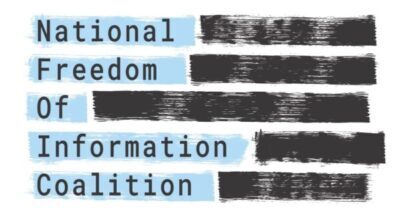The following is David Cuillier’s editor’s note for the December 2020 edition of the Journal of Civic Information. To read the edition, please click here.
——————
This is a societal illness that will linger for years, perhaps decades. I am referring to civic information secrecy, not COVID-19.
After nearly a year of worldwide restrictions intended to thwart the coronavirus, we have continued to witness increased government secrecy, from delays and closures of health records to restricted access to elected officials’ decision-making discussions.
If we have learned anything from significant human events in history, we can expect this secrecy to continue, at some level, long after the pandemic ends.
World War II, for example, resulted in a clampdown in government information that continued after the war’s end in 1945, justified by the Cold War.
Following the terrorist attacks of Sept. 11, 2001, government agencies throughout the United States closed infrastructure data and other records deemed a threat to national security, and many of those records remain secret today.
During times of mortal strife, it is human nature to play it safe through restriction of information. When people are reminded of their own potential deaths, they cling more dearly to their world views, leading to those who value national security to become less supportive of information transparency.
We saw this effect throughout the U.S. starting in March 2020 in response to the pandemic. For example, Palestine, Texas, banned a news reporter from a city council meeting; the Council of the District of Columbia said it did not have to respond promptly to records requests; the FBI refused to accept record requests online or by email, and de-identified nursing home data was withheld from the public.
In April 2020, Frank LoMonte, director of the Brechner Center for Freedom of Information at the University of Florida and publisher of The Journal of Civic Information, wrote an essay for the journal calling out the information lockdowns. During times of strife, he wrote, accurate and complete information is even more important, and could “literally mean the difference between life and death.”
Yet, the secrecy continues. Each summer and winter, I teach an online class in accessing public records, requiring students to gather dozens of public records regarding a house for sale. In June of the pandemic, few records were provided to the students, as agencies said it would take at least 30 days to even respond. They said the same thing in December.
Anecdotes are fine, but peer-reviewed research is better. This issue of The Journal of Civic Information features four research articles focusing on access to civic information during the COVID-19 pandemic.
We lead the issue with Amy Kristin Sanders’ big-picture analysis of the legal landscape in the United States regarding government information related to COVID-19. She adeptly examines how public record laws and court decisions apply to citizens’ ability to acquire death records, balancing the right of access with personal privacy. She provides practical recommendations for policy makers and advocates.
Al-Amyn Sumar then explains the impact of the Health Insurance Portability and Accountability Act on access to COVID-19 information. As we have seen, HIPAA has been invoked throughout the country as a reason to hide government records. Sumar peels back that onion, highlighting the “Required by Law” exception that gives information seekers a strong case for record disclosure. He also provides a striking state-by-state list of examples of how HIPAA has been used to hide pandemic information from the public.
Yet, every jurisdiction is different, as state laws vary in their language and court interpretation. Megan Craig and Madeleine Davison provide a breakdown for the dozen states that provide death records openly, the five states that provide partial access, and the rest of the states that keep such information secret. This research can provide access advocates context for improving transparency in their own states.
Finally, Jodie Gil and Jonathan L. Wharton provide a fascinating look at how municipalities in Connecticut have attempted to conduct the public’s business online during the pandemic, for better or for worse. They surveyed officials from 95 towns, interviewed those in charge of public meetings, and lay out specific case studies, all revealing practi cal insights for protecting public participation in government, which could improve the flow of civic information long after the pandemic is over.
The four research articles provide practical advice for improving government transparency, even during these trying times. Armed with these facts and recommendations, access advocates and government information custodians can better their communities, and ultimately save lives.
Here’s to 2021, for better health, and a stronger information ecosystem.
* Please send correspondence about this article to David Cuillier, University of Arizona, cuillier@arizona.edu.
